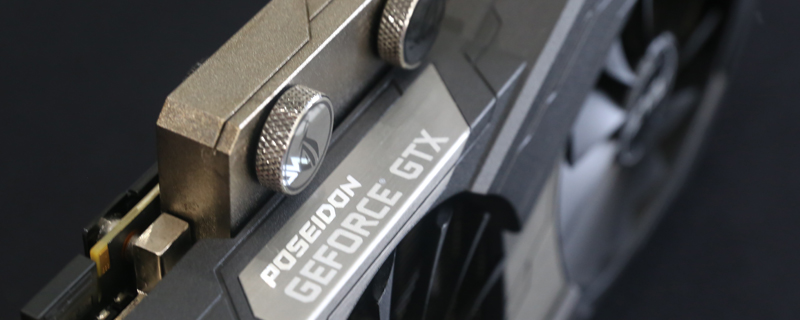ASUS ROG GTX 1080 Ti Poseidon Platinum Review
Conclusion
Whenever something appears which claims to be the best of both worlds it is usually true that instead of being fantastic at both it is merely average at both and you’d be better of going for one dedicated to your requirements. This has usually been the case with hybrid GPUs as the needs of a waterblock are very different to the large surface area prerequisites of an air-cooled graphics card.
The Poseidon is, largely, the first that truly proves its capabilities as both a water-cooled and air-cooled option.
Air-cooled the card hit 74°C which is on the warm side for a GTX 1080 Ti but still well under the 80°C mark which we generally consider to be the tipping point from warm to irritatingly hot. No, it isn’t as cool as some of the dedicated air options such as the ASUS Strix or Gigabyte Aorus, but it’s still not ludicrously toasty. Under water though the outstanding thickness and design of the waterblock on the Poseidon keeps things very cool indeed, a mere 44°C. With the current warmer weather we would expect temperatures to rise when we stopped using the air-conditioning we utilise to ensure that all our tests are conducted at the same ambient temperature, but despite it being in the 30s outside once we turned the air-con off the Poseidon still only just broke into the 50°C mark. So as a water-cooled GPU it is fantastic, and as an air-cooled one it’s decent.
Performance is exactly where you would expect an nVidia card with this much thermal headroom to be. There is so much available that the GPU Boost technology really gets into its stride providing us with the best average boost clocks we’ve seen on a GTX 1080 Ti based graphics card. High clocks equal great performance and the Poseidon was regularly topping our graphs and by a decent amount too.
We are always slightly confused by these hybrid coolers. Yes it does both things well, and yes it is the perfect card to buy if you plan on moving from air to water at a later date without taking your card apart to install a water block or if you are actually afraid to mount a block yourself. However, if you just plan to run on air all the time then why wouldn’t you grab the Strix which is cheaper and slightly better at keeping your air-cooled temperatures low. Or, if you know you have a water-cooled system then grab a more affordable card that either has a block installed already or just get a block of your choosing and enjoy the thinness of a purely liquid solution. The only situation in which a water-cooled card that also has fans can be helpful is if your pump dies so you can keep the card cool in the few moments you have before your CPU fries or the liquid still left in the Poseidon overheats and blows it to smithereens. We are so jolly today aren’t we! Seriously though we get it covers both sides of the fence and this is probably the best performing Poseidon so far. There are no temperature based water cooling sacrifices to make and it still does very well on air, if anything the only thing you will lose out on are the aesthetics that you get from a well made dedicated water block.
The ASUS ROG GTX 1080 Ti Poseidon Platinum is fantastic if it is exactly what you require, but it is a very niche product for the reasons listed above. However, if you want a card that handles both water and air with aplomb then its the best Poseidon to date and wins our OC3D Performance Award.
Discuss your thoughts about the ASUS ROG GTX 1080 Ti Poseidon Platinum Review on the OC3D Forums.




